#Bentley Motors Limited
Explore tagged Tumblr posts
Photo

"William III of England bleeds and smiles vulgarly"
Source: k-star-holic.blogspot.com
0 notes
Text


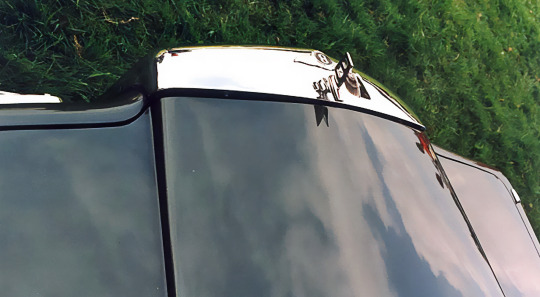

Bentley Camargue, 1985, by Pininfarina. Dating from a time when Bentley was a subsidiary of Rolls-Royce. For much of the time the two companies were tied together Bentleys were simply badge-engineered versions of Rolls-Royce models. The Camargue, designed by Paolo Martin at Pininfarina, was an exception, only being marketed as a Rolls-Royce. The factory built one Bentley-badged Camargue prototype in 1977 but the fate of that car is unknown. Then is 1985, near the end of the Camargue's model life, the factory made this one-off, it's serial number reveals the car was a Bentley from the moment it was built, rather than a "conversion." Decoding SCBYJ000XFCH10150 relays the following information: SC = Manufacturer Rolls-Royce Motor Cars Limited, Bentley Motors (1931) Limited B = Branding Bentley YJ = Model Camargue 00 = Engine Type 6.75 Litre V8, naturally aspirated, non-catalyst exhaust system 0 = Restraint Type other than USA prior to 1987 X = Checksum Digit F = Year 1985 C = Factory Location Crewe H = Steering Location Home market, Right hand drive 10150 = Chassis Serial Number
#Bentley#Bentley Camargue#Pininfarina#Paolo Martin#Camargue#one-off#Rolls-Royce Camargue#1980s#1985#luxury car#one of one
111 notes
·
View notes
Text

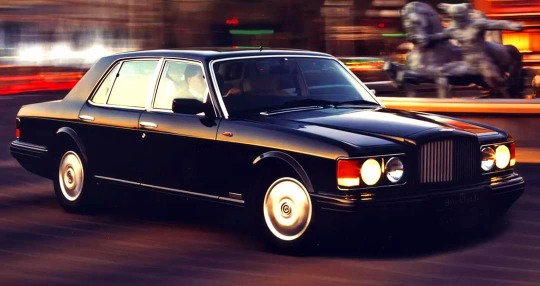
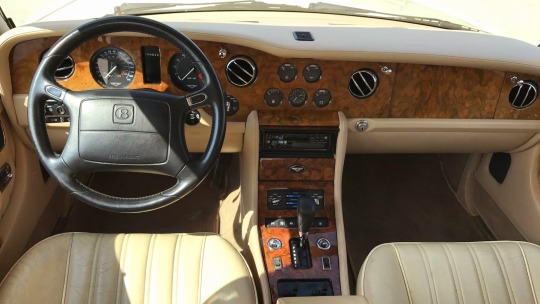
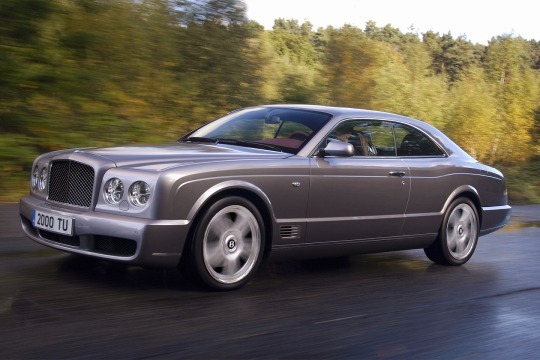
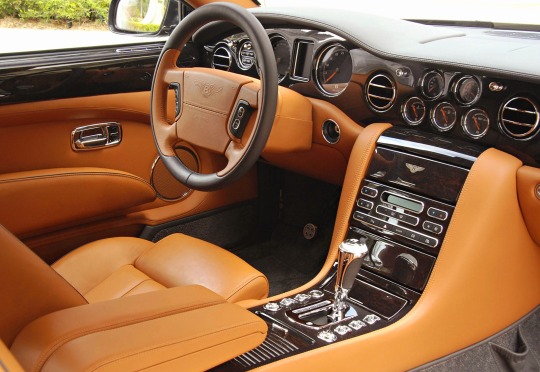
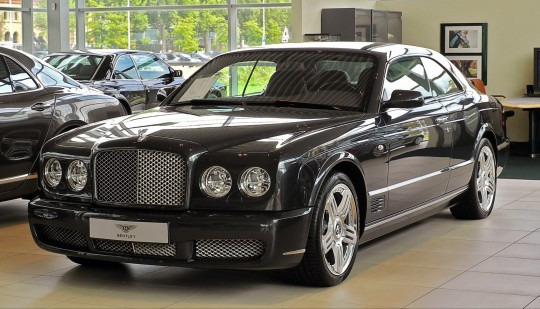


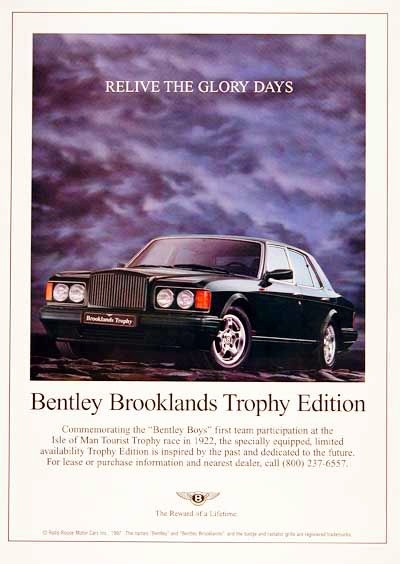
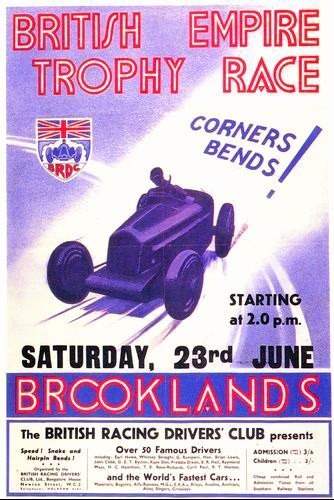
🇬🇧 Buckle up for a journey through the illustrious history of the Bentley Brooklands—a true icon of luxury and performance in the world of automotive excellence! Crafted by the esteemed British automaker Bentley Motors Limited, the Brooklands represents the epitome of elegance, power, and sophistication.
🏁 Introduced in 1992, the Bentley Brooklands took its name from the legendary Brooklands motor racing circuit in Surrey, England—a fitting homage to Bentley's rich heritage in motorsport. From the moment it rolled off the production line, the Brooklands captivated enthusiasts with its timeless design and impeccable craftsmanship.
🎩 Designed as a grand tourer, the Bentley Brooklands exuded understated luxury and refined elegance, with its sleek lines, sumptuous interior, and handcrafted details. Whether cruising along the open road or gliding through city streets, the Brooklands offered a driving experience like no other, blending comfort, performance, and prestige with effortless ease.
⚙️ Under the hood, the Bentley Brooklands boasted formidable power, courtesy of its potent V8 engine, delivering exhilarating performance and effortless acceleration. Combined with advanced suspension and braking systems, the Brooklands offered a smooth and refined driving experience, allowing drivers to conquer any journey with confidence and grace.
👑 The Bentley Brooklands was renowned for its exclusivity, with production limited to just a handful of examples each year. Hand-built by master craftsmen at Bentley's renowned Crewe factory, each Brooklands was a bespoke masterpiece, tailored to the exacting specifications of its discerning owner.
🌟 Today, the Bentley Brooklands remains a symbol of automotive excellence and refinement, cherished by collectors and enthusiasts around the world. With its timeless design, unparalleled performance, and unwavering commitment to luxury, the Brooklands continues to uphold Bentley's legacy of craftsmanship and prestige on the road.
#brits and yanks on wheels#retro cars#transatlantic torque#vehicle#cars#brands#old cars#companies#automobile#english cars#made in uk#made in england#bentley#brooklands#bentley brooklands#luxury cars#luxurycars#luxury#race car#race#racing#great britain#british automotive#automotive#surrey#bentley motors#craftsmanship#elegance#cool cars#car
11 notes
·
View notes
Text
Bespoke Bentley: Private White V.C. Bentayga, by Mulliner
Bentley Motors is proud to announce the limited edition one of one Private White V.C. Bentayga, by Mulliner. This bespoke Bentayga commissioned by Bentley Manchester and Mulliner is a true expression of British heritage, handmade craftsmanship and luxury fashion that both Private White V.C. and Bentley Motors represent. This unique specification of Bentayga has already secured its home, having…

View On WordPress
#automotive#Bentayga#Bentley#Bentley Bentayga#Bentley Mulliner Bespoke#Bespoke Bentley#Mulliner#news#Press release#Private White V.C. Bentayga
7 notes
·
View notes
Text
Fast facts about the Dutch Grand Prix
Fast facts about the Dutch Grand Prix By Balazs Szabo on 27 Aug 2023, 10:00 Formula One returned after its traditional summer break, albeit this time it is not the Belgian Grand Prix, but the Dutch Grand Prix to kick off the second half of the season. F1Technical's senior writer Balázs Szabó picks out the trivia and stats about today's Zandvoort F1 race. Long history – Today’s Zandvoort race will be the 33rd FIA Formula One World Championship Dutch Grand Prix. The race joined the calendar in 1952 and was a fixture on the schedule until 1985 with the exception of several years – 1954, 1956, 1957 and 1972. The inaugural race was won by Alberto Ascari who led a one-two-three finish for Ferrari. Construction - Situated on the Dutch North Sea coast, the town of Zandvoort already hosted motor racing on its streets as early as the 1930s. After World War II, the permanent venue used today was constructed among the sand dunes, making use of roads laid out by occupying forces. Dutch designer John Hugenholtz is often credited with creating the circuit alongside his work at Suzuka. But while Hugenholtz became circuit director at Zandvoort, it's actually ‘Bentley Boy' Sammy Davis from England – winner of the Le Mans 24 Hours in 1927 – who is said to have advised the Dutch Automobile Racing Club on the layout. Banking - Formula One returned to Zandvoort in 2021. Ahead of its return, the track was modified to aid overtaking opportunites: Turn 3 and the last one, Turn 14 (named after former circuit director John Hugenholtz and Dutch driver Arie Luyendyk respectively), were reprofiled and they now sport a 19 and 13 degree banking respectively, which allows the drivers to go through them at much higher speeds. Short layout – Zandvoort is a relatively short track on the current F1 calendar. The circuit sports a lengths of 4.259km which means that drivers need to complete 72 laps to cover the race distance of 306.648km. Overtaking – Due to its tight nature, overtaking has never been easy in Zandvoort. Two DRS zones have been mandated to aid overtaking opportunities with the first one placed 50m after Turn 10 and the second one installed 40m after Turn 13. The first DRS zone has its detection point 50m after Turn 10 and the second one 20m after Turn 12. The most successful ones - Ferrari is the most successful constructor at the Dutch Grand Prix with eight victories. The Scuderia won twice with Alberto Ascari at the wheel with Wolfgang von Trips, Jacky Ickx, Didier Pironi and René Arnoux also having clinched a win with the Maranello-based outfit. The most successful driver is Jim Clark who won the Dutch Grand Prix four times, followed by Jackie Stewart and Lauda, who won three races apiece. The other repeat winners are Ascari, Jack Brabham, James Hunt and Alain Prost with all of them having two triumphs in the Netherlands to their names. Harder compounds – The banked corners at Turn 3 and Turn 14, and the proliferation of of high-speed turns mean that Pirelli arrived at Zandvoort with compounds from the harder end of its range. The C1 compound is nominated at the Dutch Grand Prix as P Zero White hard, C2 as P Zero Yellow medium and C3 as P Zero Red soft. This is the same choice as the last two years (since Zandvoort returned to the calendar) with the difference being that the current C1 compound is softer than its predecessors. Reduced speed – Due to the tight nature of the pit lane, the speed limit is set at 60kph during every on-track action of the weekend. Modifications – The Zandvoort track has gone trhough a few changes since last year. New, upgraded fencing has been installed on the right-hand side at Turn 7and Turn 8 , and in the run-off at Turn 12 to protect marshals. A bump has been removed on the start/finish straight just before the first corner. Furthermore, bumps on the right-hand side between Turns 5 and 6 have also been removed. via F1Technical.net . Motorsport news https://www.f1technical.net/news/
2 notes
·
View notes
Photo
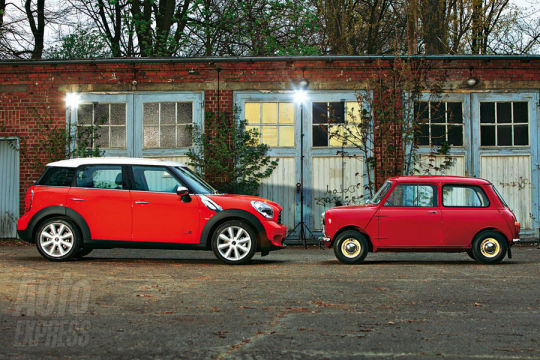
More Profit From Almost Nothing
Manufacturing is a simple formula. You take a small amount of material, mold or shape it into something unique and sell it for many hundreds of times more money than the material cost you. A Rolex has maybe $40 worth of raw materials. Carefully designed and constructed, it is worth thousands when complete, many times that when fashionable. So too with cars.
The problem with the car industry is that they are convinced that the formula works so well that they want to make more money but there are only so many customers. Everyone either has or uses a car. Out of the 350,000,000 Americans of all ages – babies and non-drivers -- there already are 278,063,737 personal and commercial vehicles. So the problem facing car manufacturers trying to make more and more profit is that either they have to try and sell two cars to every driver or they have to make the cars much more expensive, thereby making more profit.
The manufacturers chose the latter solution.
How do you make the car more expensive and thereby profitable? Remember the formula: take 10¢ of steel, shape it and sell it for $1.00. Now, there are exceptions to this rule. First you can create a mystique about Bentley, Mercedes, BMW and the like and get an extra 10% for “beat-the-Jones” show-off value. But 10% is not enough to satisfy Wall Street investors. Or you can make very limited numbers of a model to create extra demand like Ferrari and Porsche. Or you can stick to the manufacturing profit model and simply add more and more steel and other components.
It all started to get out of hand with Ralph Nader who declared the ’69 Corsair “unsafe at any speed.” The Corsair was the only US manufactured rear engine car. Kill the Corsair and you effectively killed the other “unsafe” car, the VW Beetle. The Corsair weighed 2,414 lbs. The VW Beetle weighed only 1,742 lbs. and out-performed and was more reliable. But that Nader label of “unsafe” effectively killed the US market for the rear-engined Beetle. VW’s answer was to put the motor back in front, add almost another ton of steel, and relaunch the Beetle. More steel equaled a higher price and more profit.
Meanwhile, Chevy and Ford sedans in the mid-��60s weighed 2,600 lbs. By 2022 they had ballooned up to 3,500 lbs. More material, more profit. VW Jetta’s are 50% heavier than when launched. Camry weighed 2,161 lbs. when launched in 1982, now weigh in at 3,310 lbs. In the SUV market, 2023 weights are getting up close to 6,000 lbs. or 3 tons for Tahoes and Expeditions.
And then along came electric cars.
Instead of going back to lighter, less bulky chassis, they simply stuck the new motor(s) and all those batteries in conventional platforms, adding another 300 lbs. even though they had removed the engine and gearbox – hardly lightweight components – and had reduced the overall size of the car by 20%. And Tesla? The lightest is 4,048 lbs. with the Model X at 5,390 lbs. And the prices for these increases in weight? Pretty much in lock step. More metal and plastic costs you more.
Now here’s the question we all need to ask ourselves: given today’s technology providing reliability mechanically (which is also lighter than old cast-iron engines), wouldn’t it be nice to have a reasonably heavy car instead of a gas guzzling heavyweight or an electric car that can only go 200 miles? Put today’s engine into a 1968 Volvo weighing 2,500 lbs. and you’d get 50 mpg and all the safety needed. Put an electric drivetrain in an original VW Beetle and you’d get 400-mile range with half the batteries of a Tesla. Or do as Ford is doing, stripping out all the unessentials, and launching the Maverick small truck with a base price of $22,000. Now that’s a business model to suit today’s consumer.
5 notes
·
View notes
Text
The Pinnacle of Luxury: Global Rentals, Bespoke Acquisitions & Unforgettable Adventures
Experience the Ultimate in Luxury Travel & Lifestyle
Luxury is more than just a service—it’s an experience, a lifestyle, and a statement. Exclusive Concierge Club redefines premium travel and lifestyle services with an unparalleled commitment to sophistication and discretion. From high-end car rentals to private jet charters and luxury yacht acquisitions, we specialize in crafting exceptional experiences that cater to the world’s most discerning clientele. Whether you seek elite transportation, bespoke ownership solutions, or one-of-a-kind luxury adventures, we ensure that every aspect of your journey is seamlessly tailored to perfection.
Luxury on Demand: Global Rentals Tailored to You
Luxury is defined by exclusivity, convenience, and unparalleled service. Whether you require an elite supercar for a weekend drive, a private jet for a business meeting, or a luxury yacht for an extravagant getaway, Exclusive Concierge Club provides access to the world’s most exclusive fleet. Our premium rental services guarantee luxury, comfort, and performance, ensuring that every journey reflects your elevated lifestyle.
Our extensive network allows us to offer an array of high-end rental options, including chauffeur-driven Rolls-Royces, self-piloted supercars, executive jets, and world-class yachts. Each vehicle, aircraft, and vessel is meticulously maintained to the highest industry standards, ensuring peak performance, safety, and aesthetics. With a seamless booking process and 24/7 concierge support, clients enjoy the ultimate convenience with personalized assistance at every step.
Supercar & Luxury Car Rentals
For those who crave the thrill of high-performance vehicles, our supercar and luxury car rentals offer an extraordinary driving experience. Choose from a selection of prestigious brands such as Ferrari, Lamborghini, Rolls-Royce, Bentley, and Aston Martin. Whether you desire an adrenaline-fueled adventure or a refined, chauffeur-driven experience, our exclusive fleet ensures that you travel in style and sophistication.
Private Jet Rentals
Time is the ultimate luxury, and our private jet rental services provide seamless, efficient, and luxurious travel solutions. Whether for business or leisure, we offer an elite selection of private jets, from light jets for short-haul flights to ultra-long-range aircraft designed for intercontinental journeys. Clients enjoy complete privacy, flexibility, and comfort, ensuring a stress-free travel experience tailored to their needs.
Luxury Yacht Rentals
Experience the open sea like never before with our luxury yacht rental services. Whether you seek a sleek motor yacht for a coastal escape or a grand superyacht for an extended voyage, we provide access to the finest vessels in the world. Enjoy bespoke onboard experiences, from gourmet dining to world-class entertainment, all while sailing in unparalleled comfort and elegance.
Beyond Ownership: Bespoke Acquisitions
Owning luxury is an art, and we help you master it with precision and exclusivity. Our bespoke acquisition services are designed for those who desire the rarest and most prestigious assets, from hypercars and private jets to state-of-the-art superyachts. We navigate the global market to source and secure the finest luxury assets, ensuring that our clients acquire only the most exceptional vehicles, aircraft, and vessels.
Our acquisition process is seamless, discreet, and highly personalized. From market analysis and sourcing to negotiations and final delivery, we manage every aspect of the transaction. With access to an elite network of manufacturers, dealers, and collectors, we offer an exclusive selection that meets the highest expectations. Whether you are searching for a limited-edition Bugatti, a Gulfstream G700, or a custom-built superyacht, we ensure that your acquisition experience is nothing short of extraordinary.
Rare & Exotic Car Acquisitions
For automotive connoisseurs, we specialize in sourcing rare and exotic cars that are both timeless and highly coveted. Our access to off-market deals and exclusive collections enables us to secure sought-after models from brands like Pagani, Koenigsegg, McLaren, and more. We also assist in the customization process, ensuring that every detail aligns with your vision.
Private Jet Acquisitions
Acquiring a private jet is a statement of prestige, efficiency, and luxury. We guide clients through the entire acquisition process, from identifying the perfect aircraft to handling all aspects of customization, financing, and legal formalities. Whether you seek a brand-new Gulfstream or a pre-owned Bombardier Global Express, we ensure a smooth and transparent transaction.
Luxury Yacht Acquisitions
Owning a superyacht represents the epitome of luxury, and our yacht acquisition services cater to those who demand perfection. From sourcing world-class yachts to overseeing custom builds, we facilitate every step of the process. Our global network of shipyards, designers, and brokers ensures access to the most prestigious yachts, tailored to your unique preferences and lifestyle.
Unrivaled Experiences: The Ultimate in Luxury Lifestyle
At Exclusive Concierge Club, luxury extends beyond transportation and ownership—it is about creating once-in-a-lifetime experiences. We curate bespoke adventures for those who seek the extraordinary, ensuring that every moment is unforgettable. Whether it’s an exclusive space exploration journey, VIP access to Formula One events, or a secluded island retreat, our team crafts experiences that go beyond expectations.
Exclusive Travel & VIP Access
From high-end hospitality and private villa rentals to securing front-row seats at prestigious events, we offer unparalleled access to the world’s most coveted experiences. Whether attending the Cannes Film Festival, the Monaco Grand Prix, or a private art auction, our clients enjoy privileged access that elevates every occasion.
Personalized Luxury Adventures
Imagine diving in a private submarine to explore the depths of the ocean, embarking on a heli-skiing expedition in the Swiss Alps, or enjoying a Michelin-starred dining experience in a remote destination. Our personalized approach ensures that every detail is tailored to your desires, creating memories that last a lifetime.
Bespoke Concierge Services
Our 24/7 concierge service caters to every need, from last-minute reservations at exclusive restaurants to arranging private security and personal shopping. Whatever your request, we make the impossible possible, ensuring an effortless luxury lifestyle at every turn.
Redefining Luxury, One Experience at a Time
Exclusive Concierge Club is more than a service provider; we are curators of luxury, architects of bespoke experiences, and specialists in the art of refined living. With a commitment to excellence, discretion, and personalized service, we redefine what it means to travel and live in luxury. Whether you seek an elite rental, a bespoke acquisition, or an unforgettable adventure, we are here to turn your vision into reality.
Visit us at : https://www.exclusiveconciergeclub.com/

0 notes
Text
Special Art Motors
Dubai is a city of ambition, luxury, and unparalleled style, and at Special Art Motors, we aim to reflect that in everything we do. Specializing in high-end luxury cars, we are proud to be one of the leading names in Dubai for offering exclusive vehicles that combine sophistication, innovation, and performance.
Our showroom is a haven for luxury car enthusiasts, featuring a diverse range of the world’s most coveted brands, including Rolls-Royce, Bentley, Ferrari, Lamborghini, McLaren, and Porsche. Whether you seek the thrill of a high-performance sports car or the comfort of a luxurious SUV, Special Art Motors guarantees a seamless experience tailored to your taste.
What Sets Us Apart?
Unrivaled Collection: From limited editions to timeless classics, we house the finest luxury vehicles in the UAE.
Customizable Options: Create a car as unique as your personality with bespoke customization services.
Exceptional Service: Our expert team is dedicated to providing personalized assistance, ensuring your buying experience is as exclusive as the car you drive.
Competitive Pricing: Luxury doesn’t have to mean overpaying. We offer competitive rates without compromising quality.
More Than Just a Sale
At Special Art Motors, we’re not just about selling cars; we’re about delivering an experience. Our team understands the importance of trust and quality in the luxury car market. That’s why we ensure every car undergoes thorough inspections, guaranteeing peak performance and unmatched reliability.
Visit Special Art Motors Today
Our showroom in Dubai welcomes clients who demand the best. Step into a world of luxury and let us help you find the car of your dreams. Whether you're a Dubai local or an international buyer, we’ll make your journey to owning a luxury car as seamless and memorable as possible.
Contact us today for exclusive offers, expert advice, or to book a private viewing of our collection.
0 notes
Text
Bentley is taking a step back on its electric car plans, citing a lack of demand among its wealthy clientele, who seem less inclined toward electrification than mainstream consumers.
While legislative pressures are pushing automakers toward electric vehicles (EVs), Bentley’s CEO Frank-Steffen Walliser openly admits, “We have to be honest; there isn’t much demand.” The luxury market, it appears, is resistant to EVs, with Bentley’s affluent customers hesitant to make the switch.
Originally, Bentley had committed to an ambitious electric transition, planning to release a new electric model each year starting in 2025, with a goal of an all-electric lineup by 2030. Previous CEO Adrian Hallmark had described this shift as crucial, emphasizing that Bentley aimed to blend its century-old legacy with modern technology. However, the company has now delayed its first electric vehicle to 2026, which will be a smaller electric SUV than the Bentley Bentayga. From then on, Bentley plans to continue with both hybrid and combustion engine models.
Luxury consumers’ resistance to EVs isn’t unique to Bentley; other high-end brands face similar challenges. For instance, Mercedes-Benz’s EQS, intended to set a new standard for luxury EVs, has not performed as hoped, prompting Mercedes to continue investing in combustion engines. Even in the hypercar segment, Mate Rimac, CEO of Rimac Automobili, has voiced his frustration with European emissions policies, stating they impose requirements “we don’t want,” which has slowed interest in his electric hypercars.
One notable shift in the luxury segment is a newfound exclusivity attached to combustion engines. With electric motors easily achieving high horsepower, the exclusivity of powerful engines like Bentley’s W8 and W12 engines is diminishing. As EVs become more mainstream, true exclusivity might hinge on large combustion engines, potentially powered by synthetic fuels or hydrogen, allowing manufacturers to create ultra-high-end models.
In response to this trend, Bentley has made a significant investment in its design, assembly, and paint facilities, which support customization for their wealthy clientele. Rolls-Royce and Ferrari are similarly leaning into personalization, recognizing that bespoke craftsmanship adds a layer of allure that electric technology alone does not.
In addition to this market pushback, luxury automakers face another hurdle: steep fines for exceeding emissions limits set to begin in 2025. To mitigate penalties, companies may need to balance their fleets with plug-in hybrids while gradually raising prices on combustion-only vehicles, maintaining their exclusivity and justifying a premium to their elite customers.
0 notes
Photo
18th January 1919 - Bentley Motors Limited was founded by Walter Owen Bentley.
For their first 27 years, Bentley did not manufacture a complete car. They made the engine and chassis, and a coachwork company would add the body.
Bentley also designed and made racing cars, which were very successful.
Rolls-Royce Motors bought Bentley in 1931. Bentley is now owned by the Volkswagon group, but their head office is still in Crewe.



1931 Bentley 8-Litre Open Tourer by Harrison
202 notes
·
View notes
Photo

Sam Hammington, Zhang Mo K-Man in the Kitchen
#Zhang Mo#William III of England#Bentley Motors Limited#Sam Hammington#Man in the Kitchen#Jung Yu-mi
1 note
·
View note
Text
Carbon Verification Market to Witness Rapid Growth Due to Increasing Concerns Regarding Carbon Footprint

Carbon verification involves the process of measuring, monitoring, reporting and verification of carbon emissions to certify organizations in reducing their carbon footprint. With a rising awareness regarding the adverse impacts of global warming and climate change, the demand for products and services that help reduce an organization's carbon emissions is growing exponentially.
The global carbon verification market is estimated to be valued at US$ 14.67 Bn in 2024 and is expected to exhibit a CAGR of 10.% over the forecast period 2024 To 2031.
Key Takeaways Key players operating in the carbon verification market include Audi AG Aktiengesellschaft, Lotus Cars Limited, Aston Martin Lagonda Global Holdings PLC, Koenigsegg Automotive AB, Bentley Motors Limited, Automobili Lamborghini S.p.A., McLaren Group, Bayerische Motoren Werke AG, h.c. F. Porsche AG, Pagani Automobili S.p.A., Ferrari N.V., Bugatti Automobiles S.A.S. Key players are focusing on developing innovative carbon accounting and verification solutions to help organizations record, analyze and report greenhouse gas emissions.
The Carbon verification Market Demand Various industries are embarking on sustainability initiatives and carbon neutral commitments which is propelling the demand for carbon accounting professionals and third-party verifiers.
The rising adoption of carbon verification practices across regions is fueling the global expansion of the market. Stringent carbon emission regulations in Europe and North America are escalating the implementation of carbon verification. Meanwhile, the rapidly developing economies in Asia Pacific and Middle East are also emerging as lucrative markets.
Market Drivers Stringent regulatory policies and carbon pricing mechanisms imposed by governments worldwide to curb greenhouse gas emissions is a major driver augmenting the need for carbon verification in industries. Various countries have implemented carbon taxes, emissions trading schemes and reporting obligations which is compelling companies to measure and verify their carbon footprint to minimize additional costs. This will continue to fuel demand in the carbon verification market over the coming years.
PEST Analysis Political: The Carbon Verification Market Size And Trends is influenced by environmental protection laws and regulations enacted by various governments globally. Carbon emission norms for industries are becoming more stringent over time in order to curb pollution levels.
Economic: A slowdown in the global economy impacts industrial production and corresponding carbon emissions. However, initiatives towards creating a low carbon economy provide opportunities for growth in the carbon verification market.
Social: Rising awareness among public and industries about environmental degradation and climate change has increased the demand for credible carbon accounting. Social responsibility becomes a priority for companies to lower their carbon footprint.
Technological: Advancements in sensor technology, remote monitoring, blockchain, AI and smart analytics help streamline the carbon quantification process and make it more accurate. Robust IT systems are developed for carbon credit certification and trading.
The carbon verification market in terms of value is concentrated most in North America and Europe due to stringent environmental policies. Major corporations have set ambitious climate targets to reduce emissions and rely on third party validation.
The Asia Pacific region represents the fastest growing market for carbon verification. With improving economies, industrial and energy infrastructure is expanding rapidly but carbon regulation is comparatively loose. However, nations have pledged climate commitments indicating growth potential for verification services especially in high pollution sectors. Get More Insights On, Carbon Verification Market About Author: Ravina Pandya, Content Writer, has a strong foothold in the market research industry. She specializes in writing well-researched articles from different industries, including food and beverages, information and technology, healthcare, chemical and materials, etc. (https://www.linkedin.com/in/ravina-pandya-1a3984191)
#Carbon Verification Market Size#Carbon Verification Market Demand#Carbon Verification Market Trends#Carbon Verification#Carbon Verification Market
0 notes
Text
The Macallan and Bentley Unveil Exclusive Whisky Range
The Macallan and Bentley Motors have just announced an exciting partnership with the launch of a limited edition single malt Scotch whisky – The Macallan Horizon, igniting enthusiasm among whisky connoisseurs and car lovers, particularly in Ghana. This release coincides with the 200-Year anniversary of The Macallan and represents a significant milestone in the realms of luxury spirits and…

View On WordPress
0 notes
Video
vimeo
The Electric Avenue: Navigating the Future with America's Favorite Car Brands. from Our Auto Expert on Vimeo.
As the dawn breaks on a new era in the automotive industry, a quiet revolution is taking place on the streets and highways across America and beyond. The shift from the rumble of gasoline engines to the whisper of electric motors is not just a trend; it's a transformation that's setting the course for the future of driving. Major car manufacturers, long celebrated for their iconic models, are now racing towards a greener, more sustainable future, electrifying their portfolios in an ambitious bid to redefine mobility in the 21st century.
From Tradition to Innovation: The Electrification of Heritage Brands
BMW is charting a course towards a future where luxury and electric propulsion coexist, targeting 2 million fully electric vehicles on the roads by 2025 and aiming for electric vehicles (EVs) to comprise half of its global sales by 2030. Ford is not far behind, with the F-150 Lightning leading its $22 billion electric venture, embodying the brand's vision for a carbon-neutral future by 2050. General Motors takes the aspirations a notch higher, with plans to eliminate gas and diesel vehicles from its lineup by 2035, highlighting Cadillac's transformation to an all-electric brand by 2030 as a key milestone.
Innovating for a Greener Tomorrow: The Diverse Paths to Electrification
Honda embraces the future with a focus on electric and hydrogen-powered vehicles, targeting a complete phase-out of gas cars by 2040. Hyundai-Kia is equally committed, investing $7.4 billion in the U.S. to support its vision of electric mobility, albeit without forgoing internal combustion models entirely. Yet, their goal of producing half a million battery cars annually by 2026 is a testament to their dedication to change.
Luxury and Performance Brands Leading the Charge
The drive towards electrification is not limited to mainstream brands. Luxury and performance car manufacturers are at the forefront of this shift, with Jaguar Land Rover pledging an all-electric lineup by 2030 and Mercedes-Benz setting its sights on an EV-only platform starting in 2025. These ambitious plans are not just about adhering to environmental standards but reimagining the essence of luxury and performance for the electric age.
A Broad Spectrum of Commitments Across the Industry
The electrification movement spans across a wide array of brands, each with its unique timeline and vision for the future. Alfa Romeo, Chrysler, Lotus, and Aston Martin are all on paths to electrify their lineups, targeting various milestones throughout the next decade. Bentley and Cadillac aim for complete electrification by 2030, while Buick, Genesis, Lexus, and Maserati share similar goals, each carving out its niche in the electric future.
The Evolution of Electrification Across Brands
Other brands like Mini, Rolls-Royce, Volvo, and Audi have also set ambitious goals for an electric future, with timelines stretching into the 2030s. Chevrolet and GMC, under the GM umbrella, align with the broader corporate vision of phasing out combustion engines by 2035. Meanwhile, Acura and Honda in North America, alongside Nissan, Jeep, and Kia, are focusing on significant electric sales targets for the next decade, underscoring the industry-wide commitment to change.
The Road to an Electric Future
As these automotive giants navigate the transition to electric mobility, the impact of their journeys will be felt far beyond the auto industry, driving innovation, sustainability, and a new vision for the future of transport. This transformation promises not only to reduce emissions and combat climate change but also to redefine the driving experience for millions. The electric future is not just on the horizon; it's here, accelerating faster than ever, powered by the vision and commitment of America's favorite car brands. Stay tuned as we continue to follow this electrifying journey towards a cleaner, greener world.
0 notes
Text
Range Rover Sport et Daytona
Le 1 février 2024
Le véhicule dont il sera question cette semaine est le «majestueux» Range Rover Sport P400 entièrement redessiné qui est arrivé sur notre marché il y a quelques mois. Mais avant de vous donner mes impressions sur ce superbe véhicule anglais, je dois faire un petit retour en arrière.
Un de mes lecteurs est le journaliste Mathieu Thomassin de la région de Québec (que je salue ici). Il disait que ce qu’il aimait de mes textes, c’est que je contais des histoires avant de parler de véhicules. C’est un peu ce que je fais ici. Donc, vous n’êtes pas sans savoir que les Range Rover sont des véhicules anglais…ou devrais-je dire «British». De nos jours, l’industrie automobile anglaise ou british n’a plus le même poids que dans le passé. Il y a peu de journalistes automobile au Québec qui, actuellement, ont vécu l’ère de l’automobile anglaise sauf, peut-être, un vétéran d’un âge semblable au mien comme, peut-être, mon vieux compagnon de voyage, Denis Duquet. Nous, nous avons connu les autos anglaises des années soixante et soixante-dix avant qu’elles ne connaissent une fin plus ou moins glorieuse.
Si vous êtes parmi les plus jeunes, des gens dans la vingtaine, la trentaine ou peut-être la quarantaine, demandez à ceux de plus de soixante ans autour de vous s’ils ont connu les Austin, les Morris, les Vauxhall ou Viva, les Triumph, les MG, les Wolseley ou même les Jaguar, les Bentley ou les Rolls-Royce de l’époque! De ces noms, peu ont survécu et, pire encore, les marques sont passées aux mains de constructeurs étrangers, voire même allemands, un «ennemi» d’importance durant les années quarante. Je m’imagine Winston Churchill se retourner à grand régime dans sa tombe sachant que les marques britanniques les plus glorieuses comme Bentley et Rolls-Royce sont désormais passées aux mains des Allemandes Volkswagen et BMW!
Land Rover, le constructeur des Range Rover, une marque qui a vu le jour juste après la Deuxième Grande Guerre appartient désormais à Tata Motors, une entreprise…indienne (de l’Inde, une ex-colonie britannique) depuis 2008 pour devenir une des deux divisions de Jaguar Land Rover Limited en 2013. Pas loin de disparaître à la fin des années quatre-vingt-dix, Land Rover a été récupérée pendant moins de deux ans par BMW avant de passer aux mains de Ford en 2005 puis à Tata quand Ford a dû se défaire de ses marques «internationales» face à une faillite possible.
À l’époque, Land Rover était une petite marque indépendante et, au Canada, ses dirigeants, de modestes administrateurs canadiens (français et anglais) organisaient des excursions extraordinaires, souvent avec leurs confrères américains. Durant les années quatre-vingt-dix, j’ai fait des excursions avec Land Rover dans les Grands Tetons au Wyoming (faites une petite recherche sur internet où vous trouverez que le parc des Grand Teton est un des plus beaux en Amérique et que, oui, le nom est vrai, venant des explorateurs…français). J’ai aussi conduit des Land Rover dont le petit nouveau de la famille alors en pleine modernisation, le Freelander, sur les chemins de glace autour de la Baie James et en Islande…Ma dernière belle expérience avec Land Rover fut il y a quelques années lorsque j’ai visité son usine à Solihull en Angleterre après avoir roulé sur sa piste d’essai du même endroit!
Comme vous pouvez voir, j’ai gardé un beau souvenir de la marque et malgré que je sois un amateur de Jeep, j’ai toujours une grande affinité avec Land Rover et sa marque de luxe Range Rover.

Les Range Rover Sport viennent d’être redessinés. (Photo Éric Descarries)
Car, malgré ses capacités hors-route indéniables, Range Rover a toujours été une marque de grand luxe, même à sa naissance au début des années soixante-dix. Aujourd’hui, même son plus petit Evoque est classé comme un VUS compact de grand luxe. Toutefois, ce sont surtout les Range Rover et Range Rover Sport qui sont considérés comme les véhicules haut de gamme de la marque.
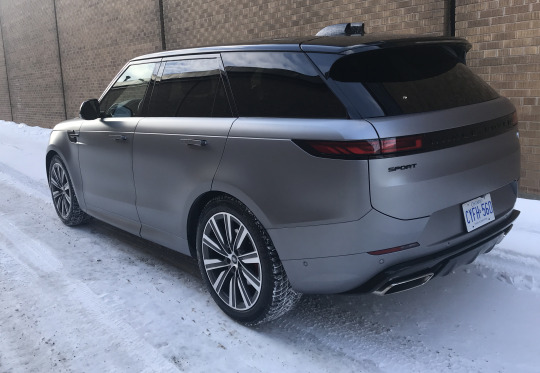
En fait, je trouve que l’arrière des Range Rover Sport est plus beau que celui des plus grands Range Rover. (Photo Éric Descarries)
En 2022, Land Rover lançait une version renouvelée de son plus imposant modèle suivi en 2023, de sa version Sport. C’est justement de celle-ci dont il est question ici. En fait, le VUS Range Rover Sport est une réplique du grand Range Rover mais avec un derrière un peu plus court affichant un design distinctif. C’est un VUS à cinq passagers plutôt qu’à sept. Mais ce qui est remarquable, c’est que le véhicule ait conservé une silhouette qui, malgré tout, lui est reconnaissable. Et j’aime cette ligne. J’aime ce véhicule. Et cela malgré sa réputation de manque de fiabilité et de petits défauts agaçants (une caractéristique qui a affublé les automobiles anglaises des années soixante qui, malgré des succès comme les Mini et les MGB, auront contribué à l’effondrement de l’industrie automobile anglaise…entre autres choses…).
Je vous laisse donc juger de vous-mêmes le design de ce grand VUS tout-terrain. Remarquez, sur mes photos, la peinture d’un gris mat de mon Range Rover Sport d’essai, une finition optionnelle qui vaut quelque 9400 $ ! Pas certain que je paierais cette petite fortune pour une peinture comme celle-là!
Quoique je n’aie rien à redire du style du véhicule, je me suis dit que c’était un «vrai char anglais» quand le déverrouillage électronique de la porte du conducteur ne fonctionnait pas toujours (faut voir les poignées sortir de la carrosserie par fonction électrique ce qui peut être un vrai petit désastre quand elles sont glacées en hiver) ou quand on cherche la clenche du second déverrouillage du capot qui est si profonde qu’elle est difficile à atteindre. Toutefois, j’aime tellement le dernier mouvement automatique de la fermeture en toute douceur des portières (en enclenche à peine la portière alors qu’un moteur électrique s’occupe de tirer celle-ci à son point final d’ancrage!).

On ne peut critiquer le superbe design à la fois modeste et riche du tableau de bord du Range Rover Sport. (Photo Éric Descarries)
L’intérieur est certes le point fort du Range Rover Sport. Son design et le choix des matériaux de la finition valent la peine d’être mentionnés. Le tableau de bord ne présente pas un design spectaculaire mais il est d’une rare élégance avec des affichages vidéo précis et remarquables. Cependant, en ce qui a trait aux commandes, on peut encore une fois se fier aux Anglais pour nous confondre. Par exemple, ouvrir les portières de l’intérieur demande un peu de recherche vu que les poignées sont d’un chrome noir sur un fond…noir! Puis, les commandes individuelles du chauffage demandent que le conducteur ou le passager presse sur le centre du bouton rotatif de la température pour engager la puissance du chauffage des sièges et de tirer sur la bague extérieur de cette même commande pour régler la vitesse du ventilateur de la chaufferette (en passant, le chauffage y était quand même parfait, même celui des sièges et du volant!) ! Il en va de même pour trouver toutes les pages du centre d’information centrale au tableau de bord. Notez que le grand écran central est combiné à Apple CarPlay et Android Auto et que le conducteur peut profiter de commandes vocales avec Amazon Alexa pour plusieurs fonctions.
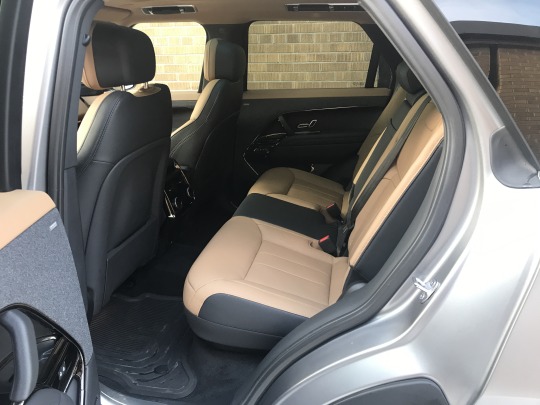
En plus d’être très élégantes et de présenter une finition inégalée, les places arrière sont vastes et accueillantes. (Photo Éric Descarries)
Autrement, les passagers ont droit à un confort inégalé, typiquement British avec une sellerie de cuir haut de gamme. Accéder à l’habitacle est un vrai charme puisque la suspension pneumatique abaisse la caisse du Range Rover pour en faciliter l’accès. La chaîne audio Meridian 3D optionnelle (à 29 haut-parleurs!) est un ajout agréable sur la route. Les places arrière sont généreuses à souhait alors que l’espace réservé au compartiment à bagages est vaste, largement suffisant pour les valises des occupants en voyage.
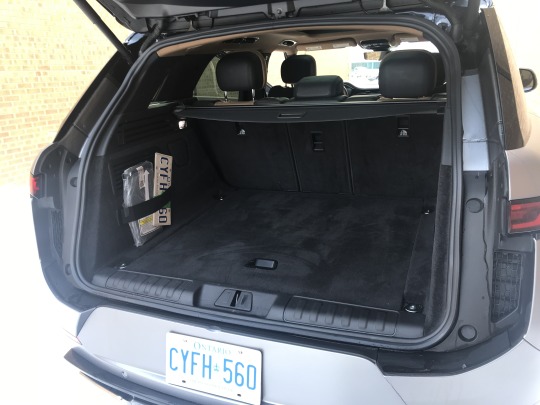
En véritable VUS qu’il est, le Range Rover Sport propose un espace de chargement utile. (Photo Éric Descarries)
Sous le capot
C’est vraiment dommage que le couvercle de plastique recouvrant le moteur soit si imposant car j’aurais bien voulu vous montrer le tout récent moteur six cylindres en ligne Ingenium de Jaguar Land Rover sous le capot. Celui-ci, d’une cylindrée de 3,0 litres, développe quelque 395 chevaux étant aidé d’un petit moteur électrique de 48 volts (qui contribue aussi au système d’économie de carburant «stop-start» quand le véhicule est immobilisé à un feu de circulation). Vous aurez compris que c’est une version Mild Hybrid qui, avec sa boîte automatique à huit rapports transmet sa puissance aux quatre roues via un boîtier de transfert électronique. D’ailleurs, grâce à celui-ci, le conducteur peut choisir les modes de conduite incluant celle sur pavé sec, sur pavé mouillé, dans la neige, dans le sable et ainsi de suite. Il peut même passer de Haut à Bas rapport de transmission du boîtier de transport. La boîte à huit vitesses s’enclenche par commande électronique grâce au levier central alors qu’il est passible de «jouer» avec les vitesses grâce aux palettes au volant. Les roues de 22 pouces de mon véhicule d’essai étaient chaussées de pneus Michelin X-Ice Snow SUV appropriés.

Malheureusement, le large couvercle de plastique qui coiffe le moteur le cache en même temps ! (Photo Éric Descarries)
Sur la route
Bien entendu, le confort, c’est ce qui prime au volant de ce Land Rover. Il est aussi très silencieux quoique, lorsque sollicité, le beau six cylindres émet un son caractéristique qui n’est pas déplaisant aux oreilles. Ce qui m’amène à vous parler de performance. Malgré le fait que cet Ingenium de 3,0 litres développe 395 chevaux, il doit déplacer une masse de près de 5500 livres! (!). Par conséquent, passer du point mort à 100 km/h peut demander autour de 7 secondes. Toutefois, on aurait dit que ces accélérations, quand même respectables, étaient un peu laborieuses. Mais, tout compte fait, ce ne pourraient être que de fausses impressions. Spécifions que les reprises sont un peu plus convaincantes. D’autre part, la capacité de remorquage de 7 160 livres devrait être utile à bien des propriétaires de VUS.
Ce qui est très agréable avec le Range Rover, c’est sa suspension pneumatique qui, je le répète, peut s’élever ou s’abaisser (elle s’abaisse automatiquement en ouvrant les portes pour aider à l’accès) selon le mode de conduite choisi, soit que ce soit sur et hors route. Elle contribue également au confort routier du véhicule qui n’a rien à voir avec la fermeté des suspensions à ressorts des 4 x 4 du passé.
Car tout Land Rover a été créé pour sortir des sentiers battus, si je peux m’exprimer ainsi. Je n’ai pas pu faire d’excursion hors-route avec mon Land d’essai mais si j’avais eu accès à un terrain approprié, je n’aurais eu aucune crainte de l’attaquer. Par contre, je m’en suis servi pour des déplacements sur autoroute voire même sur des routes enneigées dans les Laurentides et Lanaudière et, avec l’aide des Michelin X-Ice Snow, je me suis senti encore une fois en sécurité.
Question consommation, avec des déplacements à demi sur autoroute, à demi urbains, j’ai réussi une moyenne de 11,9 l./100 km ce qui est respectable pour un si gros véhicule surtout en hiver! Malheureusement, ce type de véhicule n’est pas donné. Le prix de base d’un Land Rover Dynamic SE 400 est de 108 450 $. Le véhicule dont il est question ici avait pour plus de 23 260 $ d’options (incluant un ensemble «Hot Climate» de 2400 $, un intérieur plus huppé de 2100 $, des étriers de freins peints en rouge de 500 $, la stéréo Meridian de 450 $, l’ensemble noir de 800 $, le pare-brise chauffant de 450 $, les glaces laminées de 900 $, la fermeture automatique en douceur des portières de 850 $, le toit peint en noir de 900 $, la peinture matte spéciale de 9400 $, les écrous verrouillables chromés de 225 $ , une foule d’autres «petites» options (toutes de quelques centaines de dollars chacune) en plus du «Technology Pack» de 1800 $ et de frais de transport et préparation de 1950 $, la facture finale totalisait 133 666 $ plus les taxes!

Seule ombre au tableau, les poignées de portières qui se «cachent» dans la portière pour plus d’aérodynamisme peuvent être capricieuses en hiver. (Photo Éric Descarries)
Au moins, de tels Land Rover ne semblent pas se démoder. Et les véhicules vieillissent relativement bien quoique leur entretien soit plutôt onéreux, les concessionnaires chargeant plus de 250 $ de l’heure pour le service. Évidemment, les Land Rover traînent avec eux cette vieille réputation de faible fiabilité mais nos récentes recherches prouvent que la marque a procédé à d’importantes améliorations à ce niveau.
L’industrie automobile anglaise (ou ce qu’il en reste) compte beaucoup sur sa réputation passée de belle finition d’élégance et de performance légendaire. Alors, un véhicule aussi impressionnant que le Range Rover Sport ne peut que continuer cette belle réputation, j’en suis convaincu.
Les 24 Heures de Daytona

C’est ce prototype Porsche de l’équipe Penske qui a gagné les 24 Heures de Daytona. La Mustang qui le suit faisait partie des catégories de voitures de production. (Photo IMSA)
Le weekend dernier, la légendaire piste américaine du Daytona International Speedway en Floride accueillait une multitude d’équipes de course automobile d’un peu partout dans le monde surtout pour son programme principal qui consistait en une épreuve d’endurance de 24 heures. Outre la vingtaine de prototypes qui y participaient (avec des marques comme Cadillac, Porsche, BMW, Acura, Oreca et j’en passe), il y avait plus d’une trentaine de voitures de sport de production (de marques comme Ferrari, Porsche, Lamborghini, Mercedes-Benz, Corvette, Mustang et autres) qui se disputaient des trophées dans deux catégories distinctes. Chaque voiture était conduite par des équipes de trois ou quatre pilotes et, à la fin, ce fut la victoire d’un prototype de Porsche piloté par l’équipe Penske de Felipe Nasr, Dane Cameron, Josef Newgarden et Matt Campbell qui a fait la manchette, celui-ci ayant battu un impressionnant prototype de Cadillac (oui, oui, vous avez bien lu, Cadillac!) par quelques…deux secondes (sur 24 heures!).
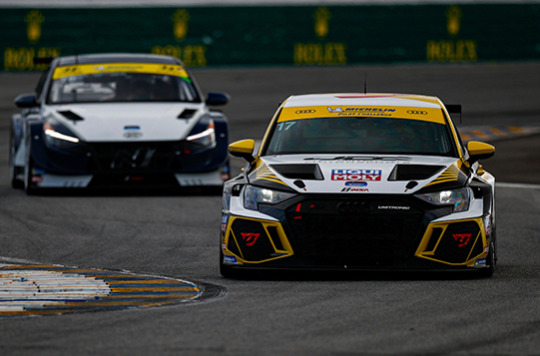
Cette petite Audi RS3 de compétition est commanditée par une entreprise de Laval, Unitronic (Photo Unitronic)
La veille, il y avait une course d’endurance de quatre heures pour petites auto sport qui mettait aux prises certains véhicules de grande marque (encore une fois Porsche y était très présent) et d’autres voitures d’allure sportives mues par des moteurs de petite cylindrée turbocompressé. C’est ici que j’aimerais souligner la victoire de l’Audi RS3 no 17 de l’équipe commanditée par une compagnie québécoise bien en vue dans le domaine de la performance, Unitronic de Laval. Petite note très personnelle, j’en suis d’autant plus fier que le design de la livrée de l’auto est le travail de Guillaume Descarries, le fils de l’auteur de ces lignes! La saison commence alors très bien!
0 notes